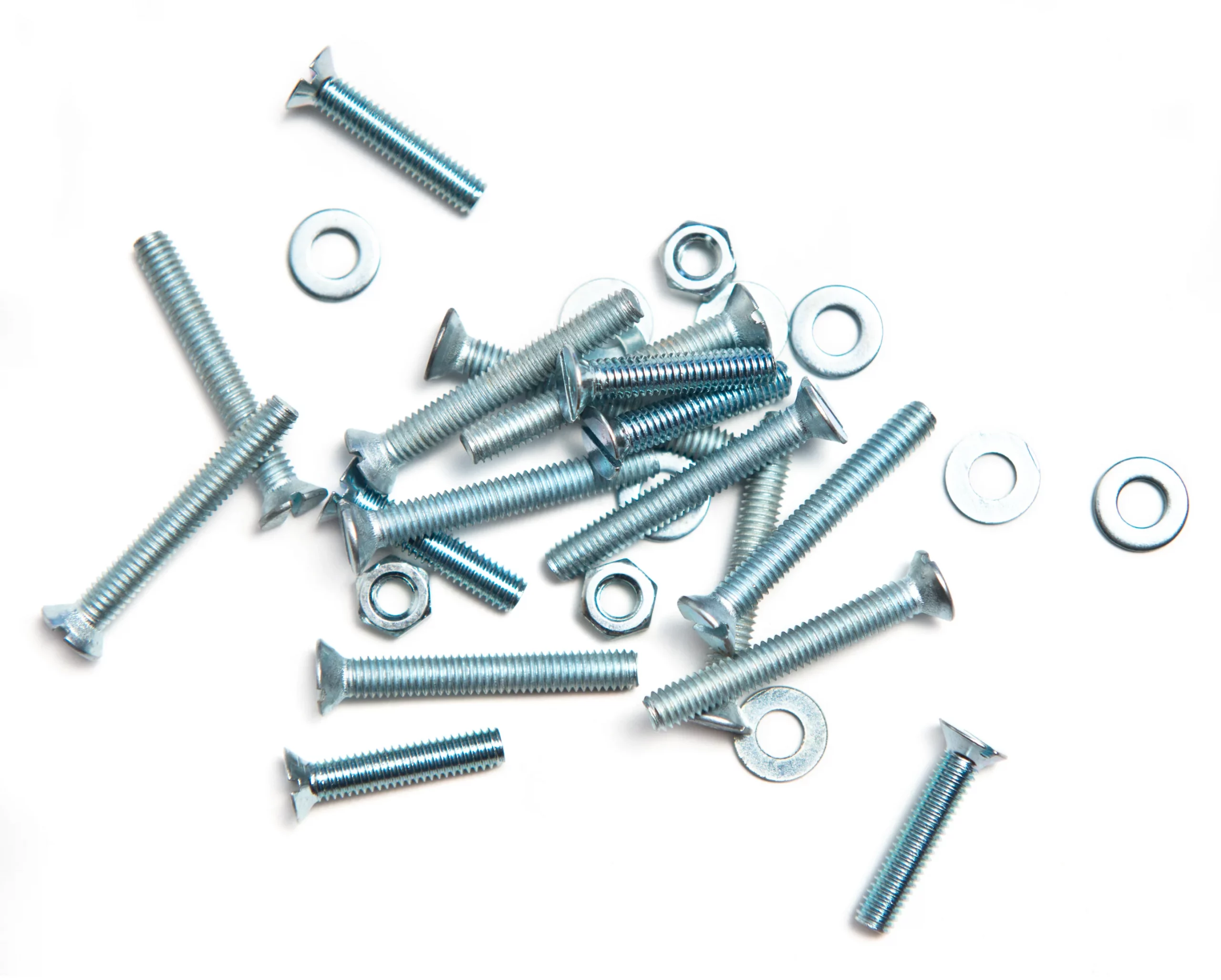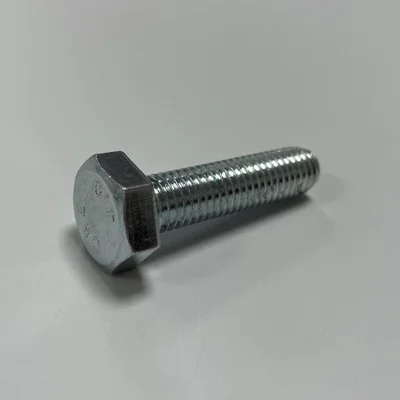caTEGORIES
Tags
How Can Load Distribution Guide the Choice of an Optimal Bolt Length?

Posted: July 17, 2025
Categories: News
Tags: news
Picking the right bolt length is a big deal for keeping things strong and safe in engineering projects. Whether you’re building airplanes, big machines, or car parts, understanding how loads spread out helps you choose the perfect bolt. Let’s explore how bolt length, material stiffness, and tightening affect how well your project holds up, making sure it stays strong and lasts a long time.

What Happens During Load Distribution in Bolted Joints?
How Load Transfer Works Mechanically in a Bolted Assembly
When you tighten a bolt, it squeezes the pieces together. This squeezing, called clamp force, holds everything in place. The bolt doesn’t carry the main load. Instead, it keeps things from pulling apart. The load gets shared between the bolt and the materials based on how stiff they are. Most of the load should stay in the joint, not the bolt.
This works because of stretchy movement. A tightened bolt stretches a little, like a rubber band. The joint squishes in response, making a balanced system. If the bolt is too short or too loose, the joint might break.
Why Axial and Shear Loads Must Be Considered Differently
Axial loads pull straight along the bolt, testing its strength. Shear loads push sideways and can make parts slide if not handled right. Bolts are better at handling pulls than side pushes.
To manage shear, the clamp force creates friction to stop sliding. That’s why you don’t want bolt threads in the way of sideways forces. Threads make the bolt weaker and stress it more.
What Influences Load Distribution: Material Stiffness, Joint Geometry, and Preload
A few things affect how loads spread out:
- Material stiffness: How stiff the boltand parts are decides how much each bends under load.
- Joint shape: A longer grip length makes things more flexible, spreading stress better.
- Tightening: Tightening the boltright gives enough clamp force to stop loosening or breaking.
QEWIT tests every batch before shipping. They check bolt strength with pull tests and load tests to make sure they work great in real projects.
How Does Bolt Length Affect Joint Performance?
Longer Bolts Provide Greater Elastic Stretch for Maintaining Clamp Force
Bolt length changes how much it can stretch when tightened. A longer bolt acts like a soft spring. It stretches more, keeping the clamp force steady even when loads change.
This stretch helps prevent breaking from repeated stress. That’s why big projects, like bridges or planes, use longer bolts with strong grades like 8.8 or 10.9. For example, Hexagon Head Bolts DIN 931 come in lengths up to 400mm and grades up to 12.9 steel, perfect for different needs.
Why Grip Length Matters for Uniform Stress Distribution Across Joint Interfaces
Grip length is the part of the bolt that goes through unthreaded material, from the head to the nut. A longer grip spreads pressure evenly across the joint.
If the grip is too short, stress piles up near the threads. This can cause cracks or loosening from shaking. A good grip makes sure the bolt and material share the load nicely.
Why You Should Avoid Thread Engagement Within Shear Planes
Having threads where sideways forces hit is bad. Threads make the bolt weaker because they cut down its size. For joints with side forces, use the smooth part of the bolt in those spots.
This is true for regular bolts or special ones like Hexagon Head Set Screws DIN 933, which are fully threaded but need careful picking for the job. They come in grades 8.8, 10.9, and 12.9 high tensile steel.

How Do You Choose Optimal Bolt Length Based on Load Conditions?
Determining Minimum Required Grip Length for Varying Applications
The right grip length depends on the job:
- For steady joints, shorter boltscan work if tightening stays strong.
- For moving or shaking loads, longer grips help calm stress changes.
- In soft materials like composites, long grips spread pressure to avoid damage.
Make sure the threads go past the nut but keep the smooth part in areas with side forces.
Balancing Between Bolt Stretch and Stiffness Enhances Fatigue Resistance
Bolts last longer when they stretch enough without breaking. Short, stiff bolts put too much stress on threads and heads, which can crack over time.
A longer bolt with good tightening acts like a cushion for shakes or heat changes. This is super important in cars or planes where conditions keep changing. QEWIT offers patches to lock bolts in place, helping them stay strong by stopping tiny movements.
The Risks of Over-Specifying or Under-Specifying Bolt Lengths
Using a bolt that’s too long adds extra weight and cost. This matters a lot in planes where every ounce counts.
Using a bolt that’s too short doesn’t stretch enough or grip well. This makes the joint weak and unsafe. Always pick a bolt length that fits the job’s needs and space.
How Can You Integrate QEWIT’s Solutions into Your Bolt Selection Strategy?
QEWITCO FASTENERS CO., LTD is a top supplier of strong bolts and fixings. Started in 2004, QEWIT makes high-quality products with British roots and Far Eastern know-how. Whether you need standard bolts or custom ones made from drawings or samples, QEWIT has you covered. Their work follows strict ISO9001 rules, so you know it’s good.
They have over 30,000 products, from carbon steel bolts to stainless steel fixings, like DIN 985 or DIN 934 nuts. You can order fast-moving items anytime, making it easy to get what you need.
What Other Engineering Factors Should Influence Your Choice?
Environmental Effects Like Corrosion and Thermal Expansion Must Be Accounted For
Heat changes make materials grow or shrink, especially if they’re different kinds, like steel and aluminum. This can stress bolts over time.
In tough places like the ocean or chemical plants, you need bolts that fight rust. Coatings like Zinc Flake or HDG help bolts last longer. Pick coatings based on where the bolt will be, not just price.
Material Compatibility Is Crucial When Selecting Both Bolt Type and Coating Options
Using different metals, like aluminum parts with steel bolts, can cause rust unless you use coatings or washers to protect them. QEWIT offers bolts in carbon steel, brass, copper, alloy, or stainless steel to match your needs.
Always think about the whole system, not just one bolt, to keep things strong and safe.
Torque-Tension Relationship Determines Preload Accuracy—and Ultimately Safety Margin
Tightening a bolt right is tricky. Things like surface smoothness or oil affect how tight it gets. QEWIT tests bolts with special tools to check tightening before shipping.
Use tightening charts for your materials, or try special tools like hydraulic tensioners for super important jobs.
Practical Examples Where Proper Bolt Length Selection Makes All The Difference
Aerospace Assemblies Require Long-Grip Bolts for Layered Composite Structures
Airplanes use soft materials that need even pressure. Long-grip bolts stop crushing while keeping things strong during flights with lots of shaking.
Heavy Machinery Needs High-Tensile Bolts That Can Withstand Uneven Load Paths
Big machines, like bulldozers, get bumpy loads from rough ground. High-grade bolts with long lengths soak up energy to avoid breaking.
Electronics Benefit From Short-Length Bolts With Controlled Preload for Sensitive Interfaces
Electronics need gentle clamp force. Short bolts with nylon insert nuts stop shaking without hurting delicate parts. Nylon insert nuts are a cheap way to fight loosening from vibration.
FAQ
Q1: How do I know if my selected bolt length provides enough preload?
Measure how much the bolt stretches after tightening. Use charts for your materials to make sure it’s strong but not too stretched.
Q2: Should I choose fully threaded bolts over partially threaded ones?
Use fully threaded bolts only when needed. Partially threaded bolts are stronger in side-force areas because they avoid weak threads.
Q3: Can I reuse bolts after disassembly?
It depends on the job. For tough projects, use new bolts because old ones might not tighten as well after the first use.


